Charisma Audio Signature One Cartridge by Mike Wright
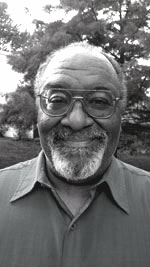 The idea to do this review started shortly after I finished my review of the Charisma Audio ECO cartridge. I mentioned to Bernard Li, owner of Charisma Audio, how much I enjoyed reviewing the ECO. Its level of performance at that $800 price point was exceptional. However, my next question could have been misconstrued as a challenge to Bernard. I asked him if the technology and parts put into the ECO cartridge signaled a new direction, a new way of thinking about cartridge design for Charisma Audio. Bernard asked me, “Have you heard about our Signature One cartridge?” I told him I had not and that the ECO had been my only experience with the Charisma cartridges. I had been over at Dave Thomas’ house, listening one day while he was evaluating a phono cartridge. I remember asking him what he was listening to, and he responded that it was a Charisma Audio MC-2 cartridge. That was about the extent of my Charisma experience before spending time working on the ECO review. Bernard then asked if I would like to spend some time listening to one of their Signature One cartridges, and I responded that I would like to give it a go. A month or so went by before one became available, but soon after that, Bernard told me that a Signature One was on the way.
The idea to do this review started shortly after I finished my review of the Charisma Audio ECO cartridge. I mentioned to Bernard Li, owner of Charisma Audio, how much I enjoyed reviewing the ECO. Its level of performance at that $800 price point was exceptional. However, my next question could have been misconstrued as a challenge to Bernard. I asked him if the technology and parts put into the ECO cartridge signaled a new direction, a new way of thinking about cartridge design for Charisma Audio. Bernard asked me, “Have you heard about our Signature One cartridge?” I told him I had not and that the ECO had been my only experience with the Charisma cartridges. I had been over at Dave Thomas’ house, listening one day while he was evaluating a phono cartridge. I remember asking him what he was listening to, and he responded that it was a Charisma Audio MC-2 cartridge. That was about the extent of my Charisma experience before spending time working on the ECO review. Bernard then asked if I would like to spend some time listening to one of their Signature One cartridges, and I responded that I would like to give it a go. A month or so went by before one became available, but soon after that, Bernard told me that a Signature One was on the way.
Technically speaking
The first thing I noticed when opening the box that the Signature One came so nicely packed in was that it had a “wooden body” made from ebony wood. I like the sound of wood-body cartridges as they seem to have a natural, earthy sound. A few other notes about the Signature One are that it has a Ruby cantilever, utilizes a “super fine line contact nude” stylus, and has an output of 0.4mV. Bernard recommended that the cartridge have about 50 hours of break-in before any real serious listening takes place. Premium parts and construction lend themselves to expecting a wonderful listening experience. The Signature One’s motor assembly is constructed with a square coil geometry.
Everything about this design is pure quality in its design and execution. It is usually found in the more expensive cartridge offerings because of the time and labor needed to ensure you get it just right. Per Bernard, “To me, whether making a phono cartridge, a musical instrument or designing an audio equipment, the most important thing is not technical, but how to combine the parts as well as the tuning technique. We listen with our ears, not test equipment. Therefore, the performance has to please our ears, not our eyes.”
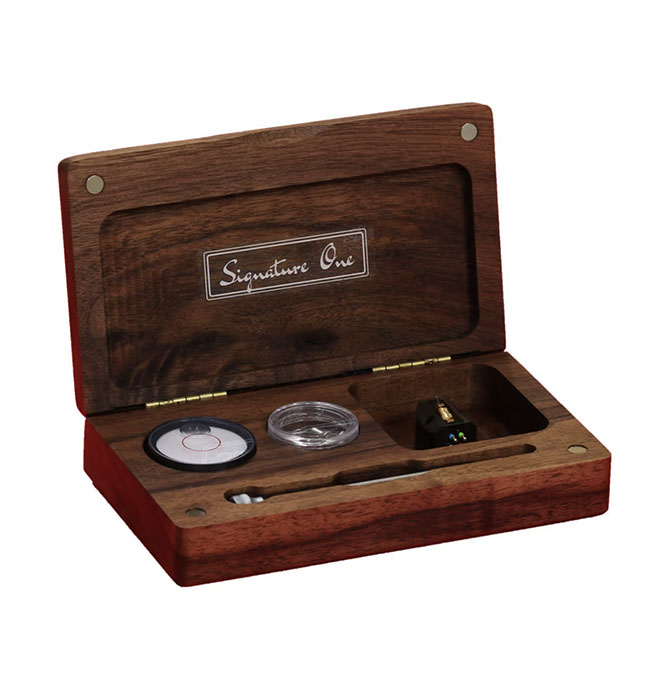
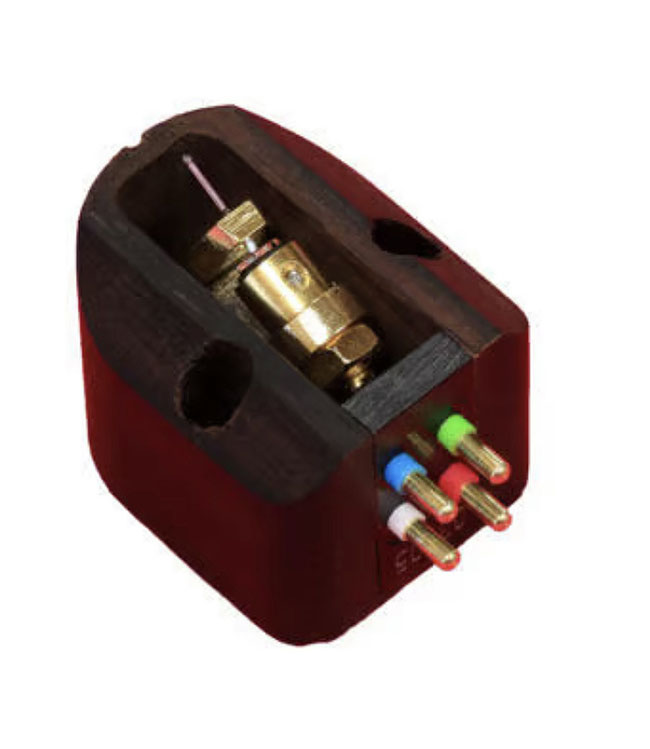
How It Sounds
When listening finally began, it didn’t take long to see that the Signature One performed much higher than the ECO. I came away regretting asking Bernard if the ECO would become the new bell-cow of the Charisma Audio cartridge line. The Signature One is sonically neutral, though there were times while listening I thought it could be a touch warm, but never to the point of distraction. When my serious listening began, I was pleasantly surprised by the level of musicality that the Signature One provided. What struck me initially was that I was hearing outstanding, well-proportioned, lifelike, and realistic musical expressions. It was almost startlingly good. The first two thoughts that came to mind were, “Wow, this is good” and “This is what next-level analog performance must be about.” Album after album felt like a revelation in terms of musicality and detail/information retrieval. The Signature One does not make the mistake that some expensive “high-end” cartridges make in their pursuit of being the last word in detail retrieval at the cost of having a little bit of a tilted upper-frequency performance. The Signature One revealed a lot of detail from my recordings without ever sounding etched or titled upwards. The sound was always organic and natural sounding. Highs were reproduced with airy details intact; extensions, cymbals, and triangles had shimmer and were portrayed genuinely. The Signature One’s midrange performance was glorious and next-level good. Instruments such as pianos, saxophones, trumpets, guitars, and especially vocalists and organs had inspiring tonal realness.
 Drum thwacks had impact and sizzle, rimshots sounded genuine, and hammers on kick drums were reproduced faithfully. I kept asking myself, “How much does this cartridge cost?” Along with being a good tracker, the ability of this cartridge to pull information from the album grooves was outstanding. The replication of inner detail, micro-dynamics, and spatial information are all outstanding. The performers were placed across a wide, deep soundstage with a realistic dimensionality surrounding them. From the sounds of the vocalists breathing, the fingers on the guitar strings, or the plucking of bass strings, the sense of depth and layering were quite natural and very noticeable; music was replicated credibly. My system’s bass performance was probably the best, especially with classical music. Popular music and rock were fine as well, as the Signature One didn’t seem to do better with one genre over another, but some of my favorite listenings came when listening to some of Mahler’s 2nd Symphony. The Signature One is an incredible reproducer of the power range in the low-end, the enormity of the musical event, and gives classical music an amazingly strong foundation. This level of excellence at the bottom end is not limited to the bass but is evident in the whole range of music, regardless of genre. The imaging performance of the Signature One was believable as vocalists routinely visited “Club MykeRyte” with their three-dimensional and realistic performances.
Drum thwacks had impact and sizzle, rimshots sounded genuine, and hammers on kick drums were reproduced faithfully. I kept asking myself, “How much does this cartridge cost?” Along with being a good tracker, the ability of this cartridge to pull information from the album grooves was outstanding. The replication of inner detail, micro-dynamics, and spatial information are all outstanding. The performers were placed across a wide, deep soundstage with a realistic dimensionality surrounding them. From the sounds of the vocalists breathing, the fingers on the guitar strings, or the plucking of bass strings, the sense of depth and layering were quite natural and very noticeable; music was replicated credibly. My system’s bass performance was probably the best, especially with classical music. Popular music and rock were fine as well, as the Signature One didn’t seem to do better with one genre over another, but some of my favorite listenings came when listening to some of Mahler’s 2nd Symphony. The Signature One is an incredible reproducer of the power range in the low-end, the enormity of the musical event, and gives classical music an amazingly strong foundation. This level of excellence at the bottom end is not limited to the bass but is evident in the whole range of music, regardless of genre. The imaging performance of the Signature One was believable as vocalists routinely visited “Club MykeRyte” with their three-dimensional and realistic performances.
Here are some of my musical references used for this review. I enjoyed listening to Sir George Solti and the London Symphony and Chorus doing Mahler Symphony No.2, “Resurrection” [London/Decca]. A marvelous work by Gustav Mahler and a masterful interpretation by Sir George Solti from London’s fabled Kingsway Hall in 1966. Now, not to be heretical, but whenever I listen to this work, MOST of the time, I’m just listening to the instrumental parts, but I must admit to enjoying the chorale parts as well with this work, which just generally doesn’t happen. The tonality of the voices of Heather Harper and Helen Watts faded away into the ether of the orchestral hall, but there are other things to like about this recording. The tempo, pacing, and rhythm are first-rate. The highs are airy and extended, and the orchestral layering and the bass are powerful. The Signature One captured the essence of this recording and made listening to it a memorable experience. Another album I enjoyed listening to was Stevie Ray Vaughn’s Couldn’t Stand The Weather [Epic]. This is a wonderful album that has withstood the test of time. Just go to any audio specialty shows, and you’ll hear what I mean. There is not a bad track on this album, but still, everyone’s favorite must be “Tin Pan Alley.” There is so much to this album that everyone enjoys. SRV’s bluesy vocalizations, the way he sings, with emphasis, at the end of each chorus, the guitar riffs as only he could do with those ungodly long fingers that allowed him to bend strings and play notes as no one else could, and the loud, dynamic drum whacks. With the Signature One, I appreciated the pure analog character of the sound (no digital haze), the ability to track this album, even too loud (at least for me) playback levels, and the sound of that guitar coming through my speakers sounding so alive and natural.
The Signature One captured the essence of this recording and made listening to it a memorable experience. Another album I enjoyed listening to was Stevie Ray Vaughn’s Couldn’t Stand The Weather [Epic]. This is a wonderful album that has withstood the test of time. Just go to any audio specialty shows, and you’ll hear what I mean. There is not a bad track on this album, but still, everyone’s favorite must be “Tin Pan Alley.” There is so much to this album that everyone enjoys. SRV’s bluesy vocalizations, the way he sings, with emphasis, at the end of each chorus, the guitar riffs as only he could do with those ungodly long fingers that allowed him to bend strings and play notes as no one else could, and the loud, dynamic drum whacks. With the Signature One, I appreciated the pure analog character of the sound (no digital haze), the ability to track this album, even too loud (at least for me) playback levels, and the sound of that guitar coming through my speakers sounding so alive and natural.
For vocals, I enjoyed listening to Ella Fitzgerald’s and Frank Sinatra’s albums. First up was Ella’s Clap Hands, Here Comes Charlie! [Verve]. Ella, she of the lightnin’ chops with her highly developed ability to scat, does a good job here with tracks like “Night in Tunisia” and “Jersey Bounce.” Still, it’s the more heartfelt, downhearted, and disconsolate tracks, like “My Reverie,” “Signing Off,” and “Spring Can Really Hang You Up,” that attracted me the most. She feels with passion and emotion that I felt like I could connect to what she was singing about. The Signature One did a great job of capturing her rich tone and varied vocalizations from scat to melancholy and reproduced this performance in such a realistically convincing manner.
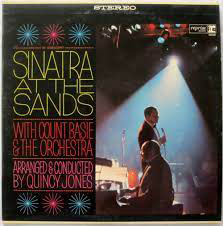 One of my favorite male vocal albums is, without a doubt, Mr. Sinatra’s Sinatra Live At The Sands [Reprise]. I can say this is one of the best live recordings by a male vocalist I have heard. With the Signature One, it sounds live, live, live. There were times when Sinatra talked, and things sounded quiet; then, at other times, he belted out the tune, and with Count Basie and his orchestra backing him, the music became dynamic, tuneful, and room-filling. Room filling to the point where the wife reminds me it’s after midnight and to turn the music down. Pick your favorite track from this album, Sinatra does most of them, and the music and the vocals are profoundly good. The Signature One made the experience more real and truthful. From Sinatra’s earthy vocal tones, the airy atmosphere of the Sands Hotel, and the fullness, presence, and enjoyable effect of Count Basie and his orchestra.
One of my favorite male vocal albums is, without a doubt, Mr. Sinatra’s Sinatra Live At The Sands [Reprise]. I can say this is one of the best live recordings by a male vocalist I have heard. With the Signature One, it sounds live, live, live. There were times when Sinatra talked, and things sounded quiet; then, at other times, he belted out the tune, and with Count Basie and his orchestra backing him, the music became dynamic, tuneful, and room-filling. Room filling to the point where the wife reminds me it’s after midnight and to turn the music down. Pick your favorite track from this album, Sinatra does most of them, and the music and the vocals are profoundly good. The Signature One made the experience more real and truthful. From Sinatra’s earthy vocal tones, the airy atmosphere of the Sands Hotel, and the fullness, presence, and enjoyable effect of Count Basie and his orchestra.
A few final thoughts
 I was thoroughly pleased with my experience with the Signature One cartridge. I expected it to be good, especially knowing the quality of products Charisma Audio and Bernard Li typically produce. I was surprised to find out that it was one of the better cartridges I have heard, easily competing with some heavy hitters from Japan and Europe.
I was thoroughly pleased with my experience with the Signature One cartridge. I expected it to be good, especially knowing the quality of products Charisma Audio and Bernard Li typically produce. I was surprised to find out that it was one of the better cartridges I have heard, easily competing with some heavy hitters from Japan and Europe.
The Signature One tracks like a champ has a beautiful tone, and is equally good with different genres of music. At the beginning of my listening, I remember thinking that the cartridge was smooth and melodic. But the longer I listened, and the more it broke in, the Signature One began to let its proverbial hair down, revealing exceptional dynamic capability, detail retrieval, and bass extension with an impact that added to many enjoyable listening events. After putting in the time to listen, I came away with two conclusions concerning the Signature One cartridge. First, Charisma Audio and Bernard Li are giving this cartridge away for the asking price. Second, other cartridge manufacturers would do well to avoid direct comparisons with this beauty.
I remember reading an old Stereophile, the ones about the size of the old TV Guides, and in it was an article by or about the venerable old Sao Win cartridge. Win was one for giving you products that were worth your money without trying to get you to go broke. I remember in this article; he laid down a challenge; that his $600 cartridge would perform as well, if not better than any other cartridge out there. He felt that the space inside a cartridge could have lent itself to doing more that requires a manufacturer to charge so much money for an expensive cartridge. I remember thinking, “Poor guy probably went broke on that one.” I remember that I did not recall seeing anyone take him up on his challenge. Someone may have; I’m just saying I don’t remember hearing anything about it afterward. In some respects, Bernard Li reminds me of Sao Win. He could be charging a lot more for the Signature One, but that’s not what drives Li. Bernard Li wants to make the best cartridges whose performance exceeds their price. In doing so, he makes cartridges whose value exceeds many others. My impression of the Signature One is of that little guy with enough moxie and strength to pony up to the bar with the bigger, tougher guys, and they, in turn, give him his room because he has put in the time and earned their respect. There has not been one article I’ve read or listening experience shared with fellow audiophiles where I didn’t conclude that 1) the Signature One outperformed what it costs, and 2) it could easily cost much more and still be a bargain. For a cartridge that costs roughly $4K to compete with the better Koetsus, Air-Tights, van Den Huls, and Transfigurations, the Signature One is most highly recommended.

mike wright
Specifications:
- Cartridge Weight: 8.4 g
- Cartridge Body: ebony wood
- Cantilever: ruby
- Stylus: super fine line contact nude diamond
- Vertical Tracking Angle: 20 degrees
- Coil: pure iron square coil with custom-made alloy wiring
- Output Voltage: 0.4 mV at 3.54 cm/sec.
- Internal Impedance: 12 ohms
- Frequency Response: 20 – 30,000 Hz ± 1 dB
- Channel Balance: better than 0.5 dB
- Channel Separation: better than 30 dB
- Dynamic Compliance: 10 um/mN
- Recommended Loading: 100 – 1,000 ohms
- Recommended Tracking Force: 1.9 g ± 0.1 g
- Tracking ability at 315 Hz / 2 g: 80 uM
- Recommended Tonearm Mass: medium
- Break-in Period: 50 hours
- Price: $3,990.00 USD
Address:
Charisma Audio
Suite 86, Unit A14
4261, Highway 7
Markham, Ontario
Canada L3R 9W6
Contact: Bernard Li
Telephone: (905) 470-0825
Fax: (905) 470-7966
E-mail: charisma@rogers.com
Website: www.charismaaudio.com
Mike’s Associated Equipment:
Stereo Times Masthead
Publisher/Founder
Clement Perry
Editor
Dave Thomas
Senior Editors
Frank Alles, Mike Girardi, Russell Lichter, Terry London, Moreno Mitchell, Paul Szabady, Bill Wells, Mike Wright, and Stephen Yan,
Current Contributors
David Abramson, Tim Barrall, Dave Allison, Ron Cook, Lewis Dardick, John Hoffman, Dan Secula, Don Shaulis, Greg Simmons, Eric Teh, Greg Voth, Richard Willie, Ed Van Winkle, Rob Dockery, Richard Doran, and Daveed Turek
Site Management Clement Perry
Ad Designer: Martin Perry


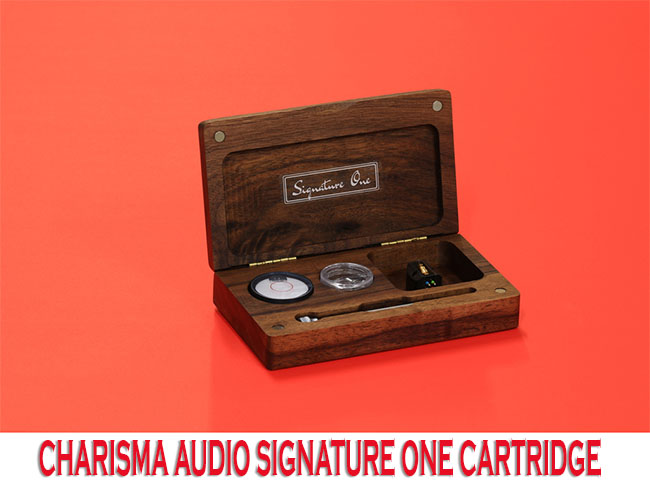
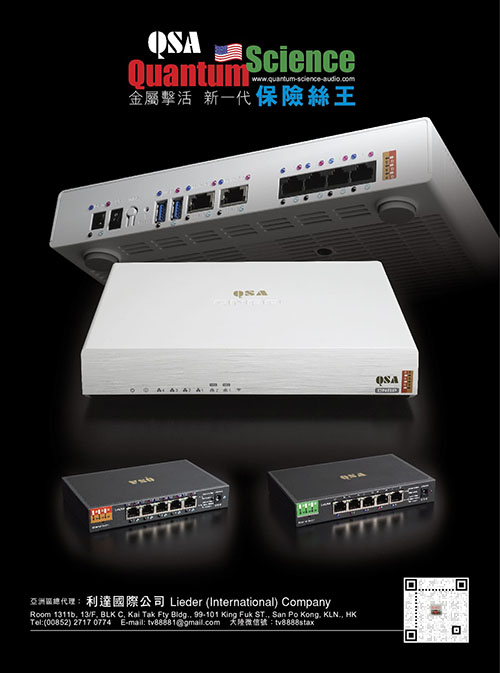

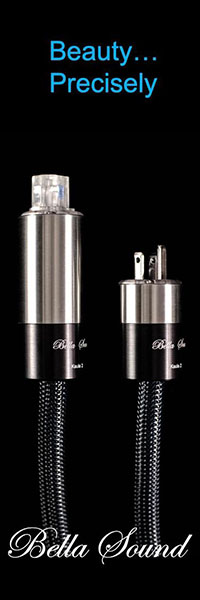


Be the first to comment on: Charisma Audio Signature One Cartridge by Mike Wright